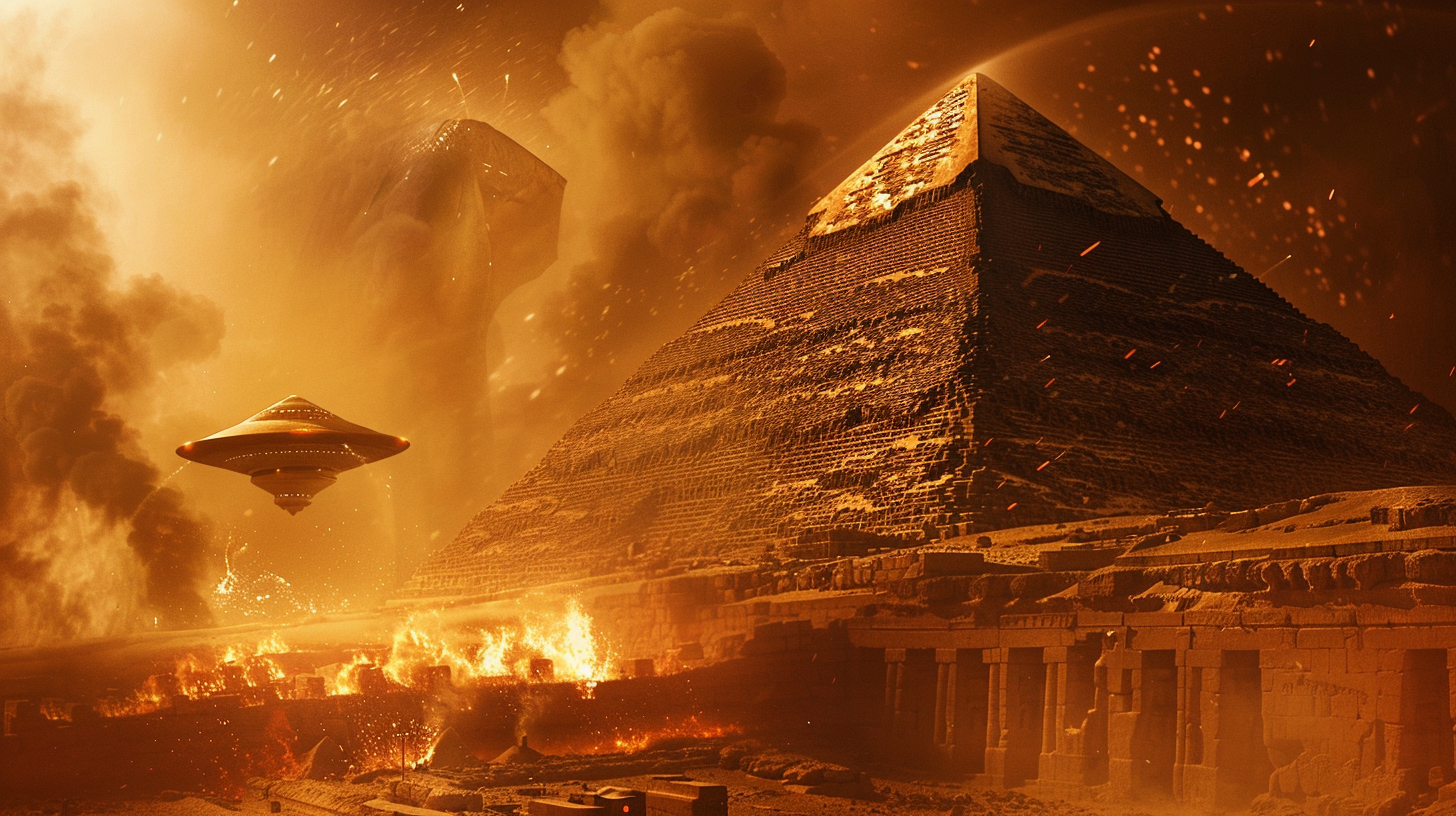Embedded within the depths of antiquity in Egyptian records lies an enigmatic manuscript known as the Tulli Papyrus. Chronicling a series of extraordinary phenomena involving luminous discs traversing the heavens, it evokes profound contemplation on the likelihood of ancient UFO sightings in Egypt. Let us embark on a journey through the narrative of the Tulli Papyrus and contemplate the diverse conjectures surrounding this captivating chronicle.
Dating back to the era of Pharaoh Thutmose III in the 15th century BCE, the Tulli Papyrus stands out as one of the earliest documented testimonies of purported UFO sightings in human history. According to this ancient script, during Thutmose III’s reign, scribes documented witnessing “rings of fire” in the firmament, accompanied by peculiar occurrences like “falling stars” and “flying circles.” These depictions bear uncanny resemblances to contemporary reports of unidentified flying objects (UFOs) or extraterrestrial vessels.
One plausible analysis of the Tulli Papyrus posits that the fiery discs delineated in the text might have been misconstrued natural events, such as meteors or comets. Civilizations of yore often ascribed mystical or divine connotations to celestial happenings, raising the likelihood that the observations chronicled in the papyrus were celestial events that were misinterpreted or mythified over time. Nevertheless, certain scholars contend that the intricate portrayals of the flying circles and their maneuvers imply a sophistication surpassing mere astronomical phenomena.

An alternative interpretation of the Tulli Papyrus postulates that the fiery discs could have been interplanetary crafts visiting Earth. Advocates of this hypothesis cite the precise narrations of the objects’ actions and characteristics as proof of advanced technology or intellect. They posit that ancient societies, such as the Egyptians, might have engaged with entities from distant realms, resulting in the sightings documented in the papyrus. Notwithstanding, skeptics urge caution in attributing the sightings to alien visitations lacking tangible evidence substantiating such assertions.
Additionally, some researchers advance the notion that the Tulli Papyrus could have served as a piece of literature or allegory rather than a factual recollection of historical events. Ancient Egyptian writings frequently incorporated symbolic or metaphorical elements, suggesting that the sightings delineated in the papyrus aimed to convey profound philosophical or spiritual concepts rather than direct encounters with UFOs. Absent additional collaborating substantiation, the true essence of the Tulli Papyrus remains subject to varied interpretations.
To summarize, the narrative of the Tulli Papyrus unveils a captivating glimpse into ancient civilizations’ interactions with cosmic phenomena. Whether construed as testimony of ancient UFO sightings, misunderstood natural occurrences, or symbolic allegory, the papyrus beckons us to ponder the enduring enigma and intricacy of human history. Irrespective of its construal, the Tulli Papyrus persists in enthralling the mind and encouraging further exploration into the enigmas of the universe.
